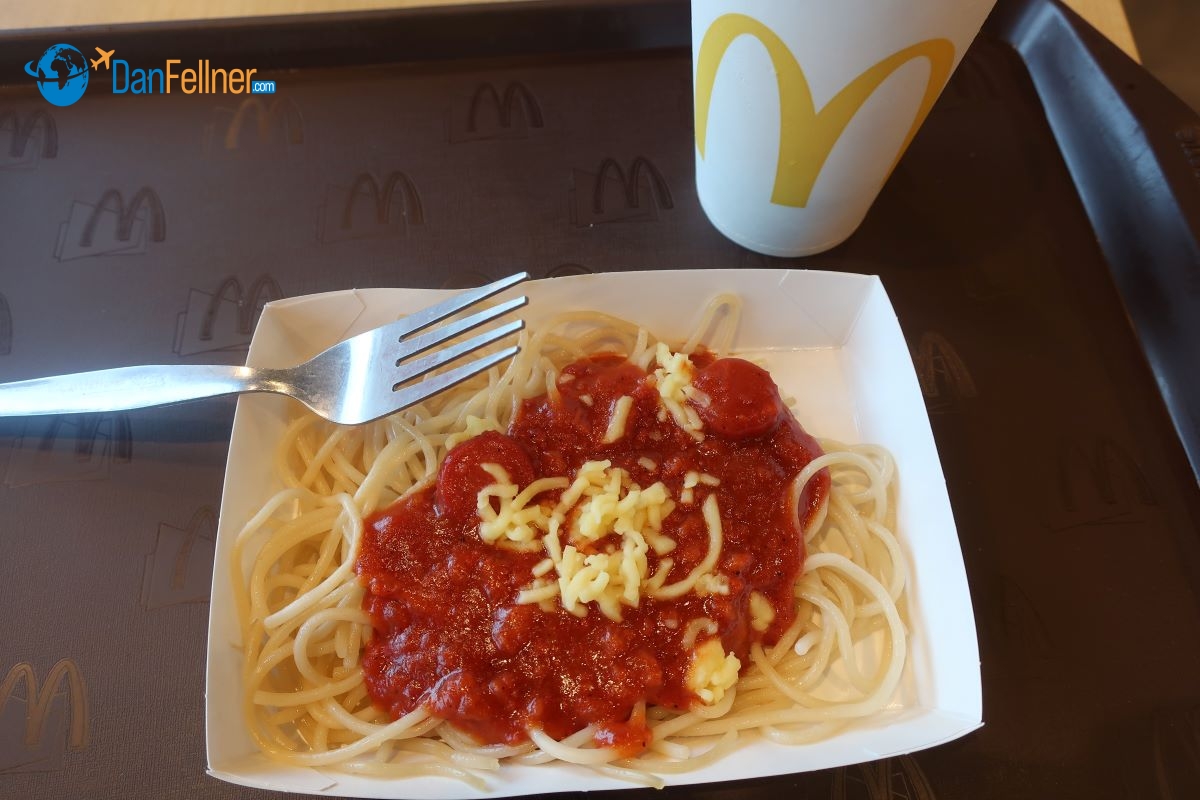Overseas McDonald’s can offer interesting cultural insights
The Arizona Republic — February 23, 2020
LAPU-LAPU CITY, Philippines – “Would you like fries with your spaghetti?”
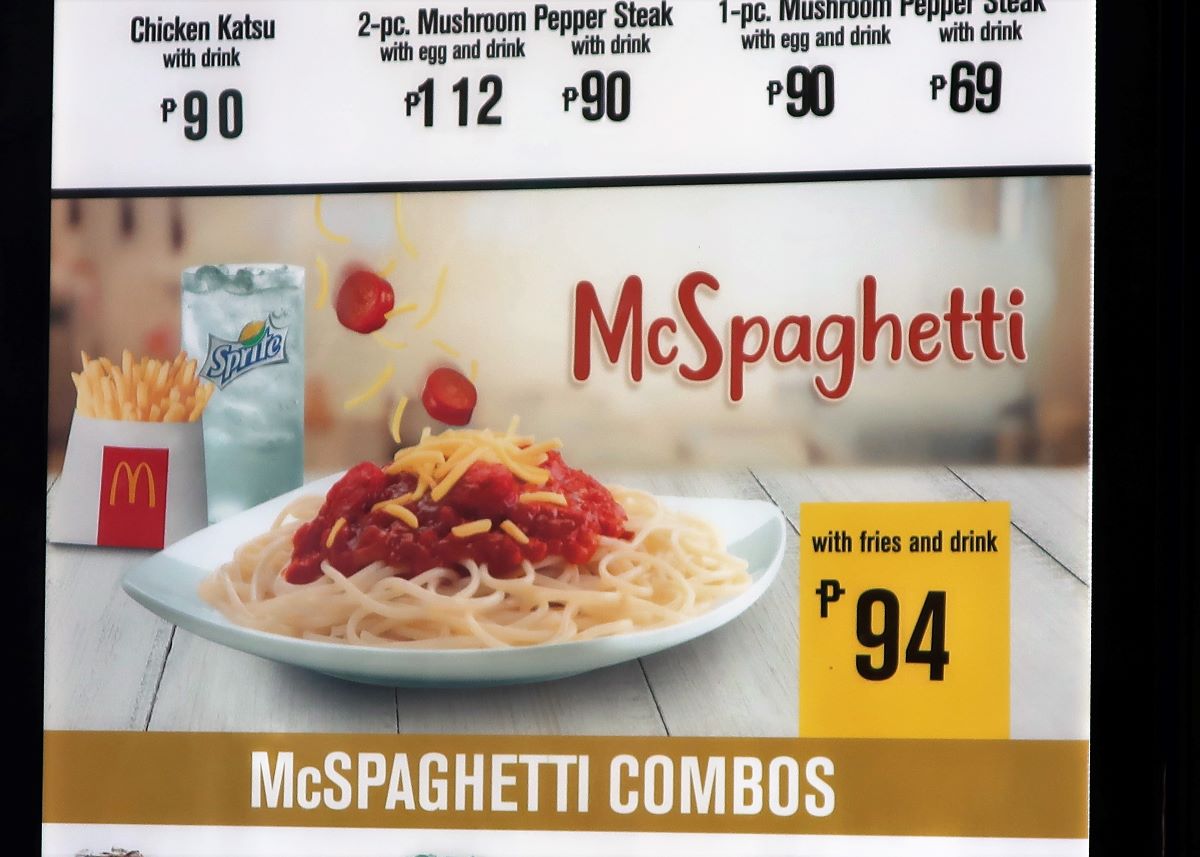
“McSpaghetti” is on the menu at McDonald’s in the Philippines.
The young lady behind the counter was responding to my inquiry about a curious item called “McSpaghetti” featured prominently on the menu board at a McDonald’s in this congested, touristy town on an island in the central Philippines.
For 94 Philippine pesos (less than $2) – which included fries and a drink — I gave it a try. I later learned that the Philippines is one of the few countries in which McDonald’s operates that serves pasta.
It may sound odd, but I’ve found that a visit to a McDonald’s restaurant when I travel overseas can often offer a unique insight into the local culture and customs. Don’t get me wrong; a visit to the Golden Arches is not as enriching as stepping inside a historic cathedral, hiking by a volcano, or gazing at a Da Vinci painting.
But McDonald’s around the world vary considerably in terms of menu, architecture and overall experience. The result can not only be a filling, inexpensive meal with unusual menu items that will surprise you, but a memorable travel experience as well. Perhaps the American-based fast-food chain’s cultural adaptability is one reason why it now operates successfully in more than 100 countries.

Ronald McDonald with the traditional Thai greeting called a “wai.”
In Thailand, a statue of Ronald McDonald greets visitors with the traditional Thai greeting called a wai, in which the palms are pressed together in a prayer-like fashion. It’s the way Thais show respect and friendship.
At another McDonald’s in downtown Bangkok, I saw a Thai spirit house, or a small religious shrine. Commonly found next to homes and businesses in several countries in southeast Asia, spirit houses normally resemble a miniature house or temple and are mounted on a pillar. It’s common to see Thais bow in front of the spirit houses and leave offerings of food and drinks to appease the spirits before going inside to grab a burger and fries.
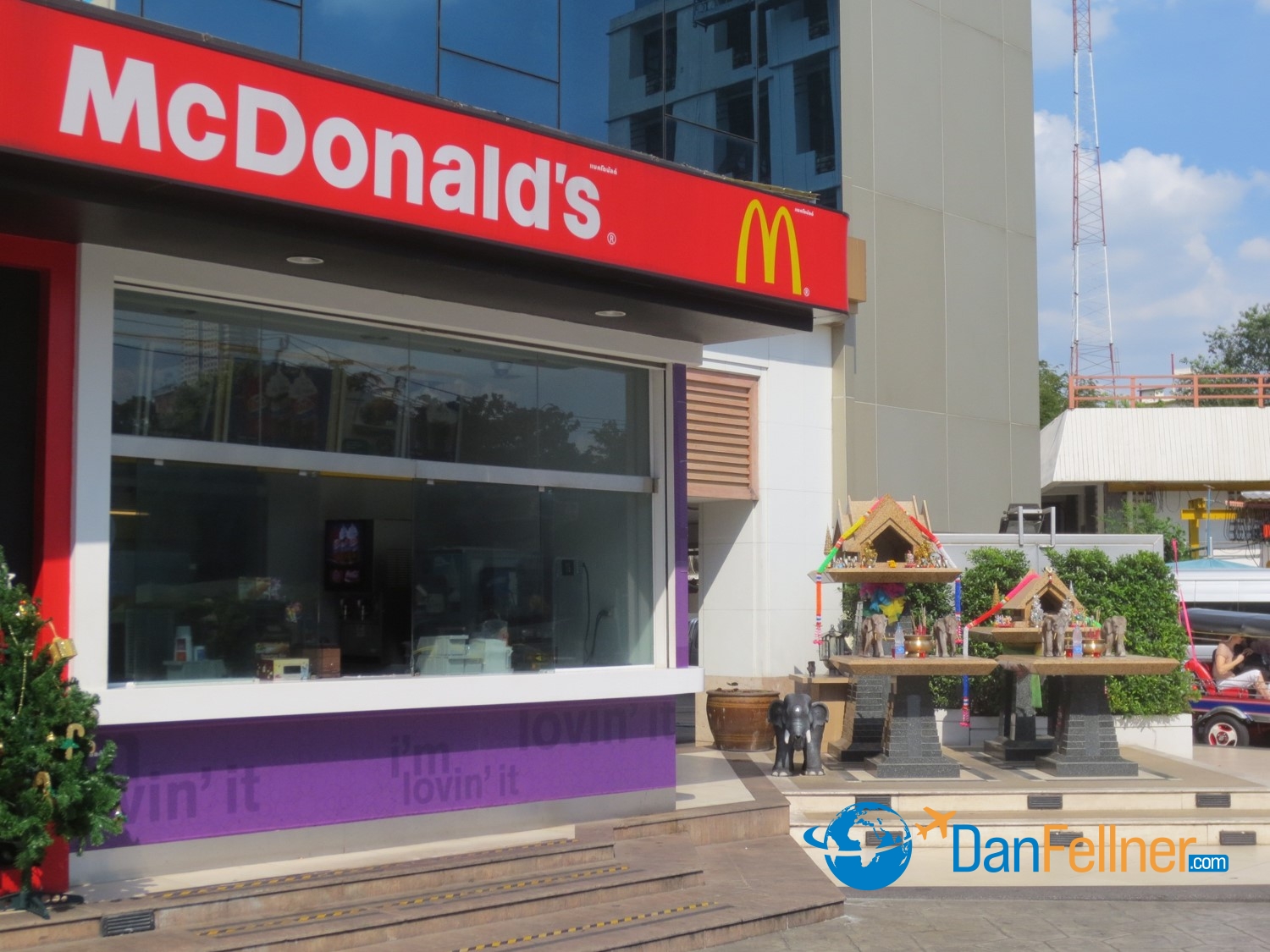
A small religious shrine called a “Spirit House” at a McDonald’s in Bangkok, Thailand.
In India, where a majority of the population is Hindu and cows are sacred, it’s considered sacrilegious to eat beef. At a crowded McDonald’s in Mumbai, there were no Big Macs or hamburgers on the menu. But I did have a “Maharaja Mac,” made with two chicken patties. It was actually quite flavorful. The restaurant also offered numerous vegetarian options.
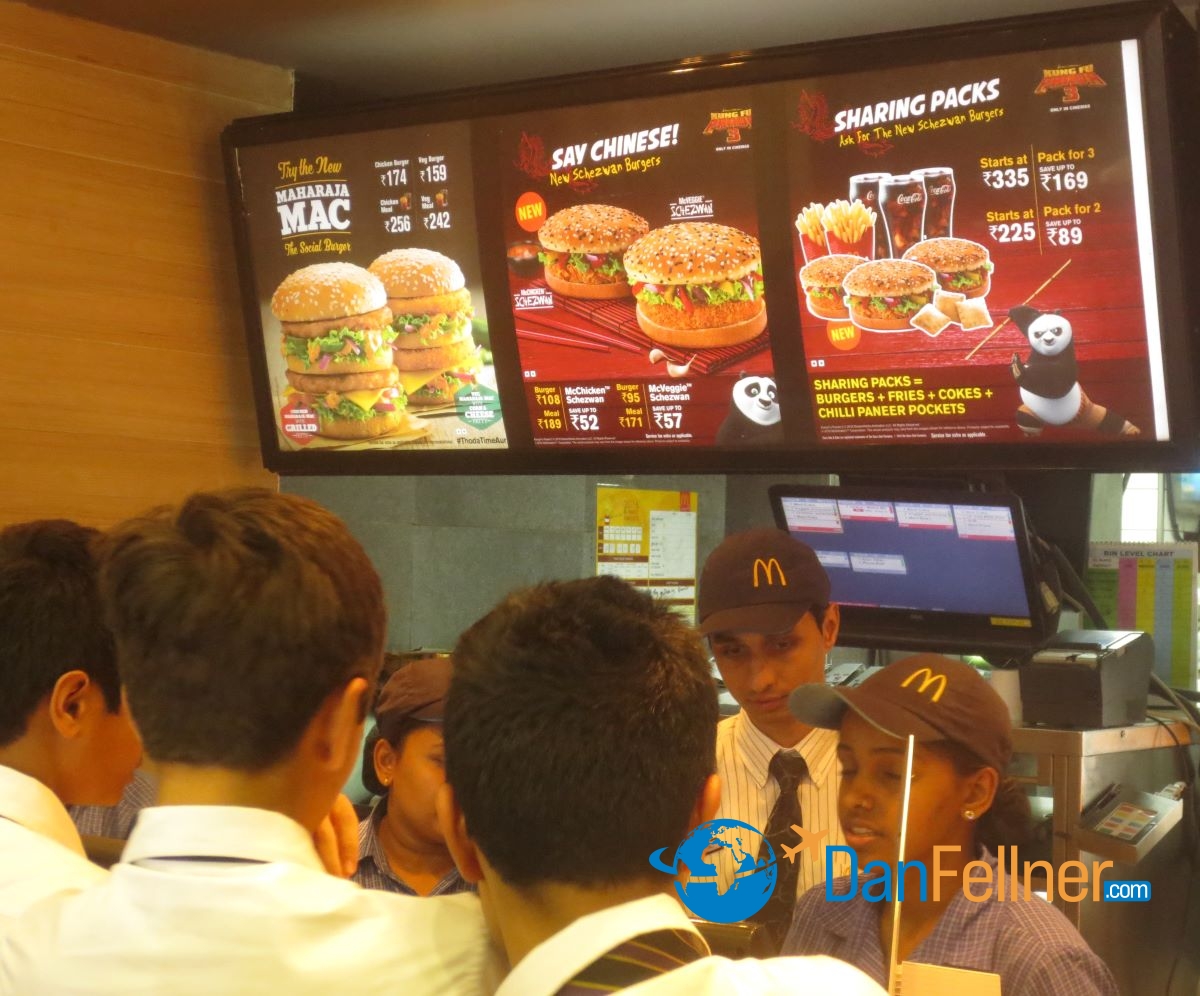
Our of respect for Hindu beliefs, the McDonald’s in Mumbai, India, doesn’t serve beef products.
McDonald’s recently introduced a burger-bun made with rice at its restaurants in Japan. The buns are glazed with soy sauce.
In France, order fries and they’ll throw in a packet of “pommes-frites-sauce.” It tastes just like mayonnaise, something many Europeans seem to enjoy as much as soccer. Non, merci. I asked for ketchup (there is often a small charge for ketchup packets at overseas McDonald’s).
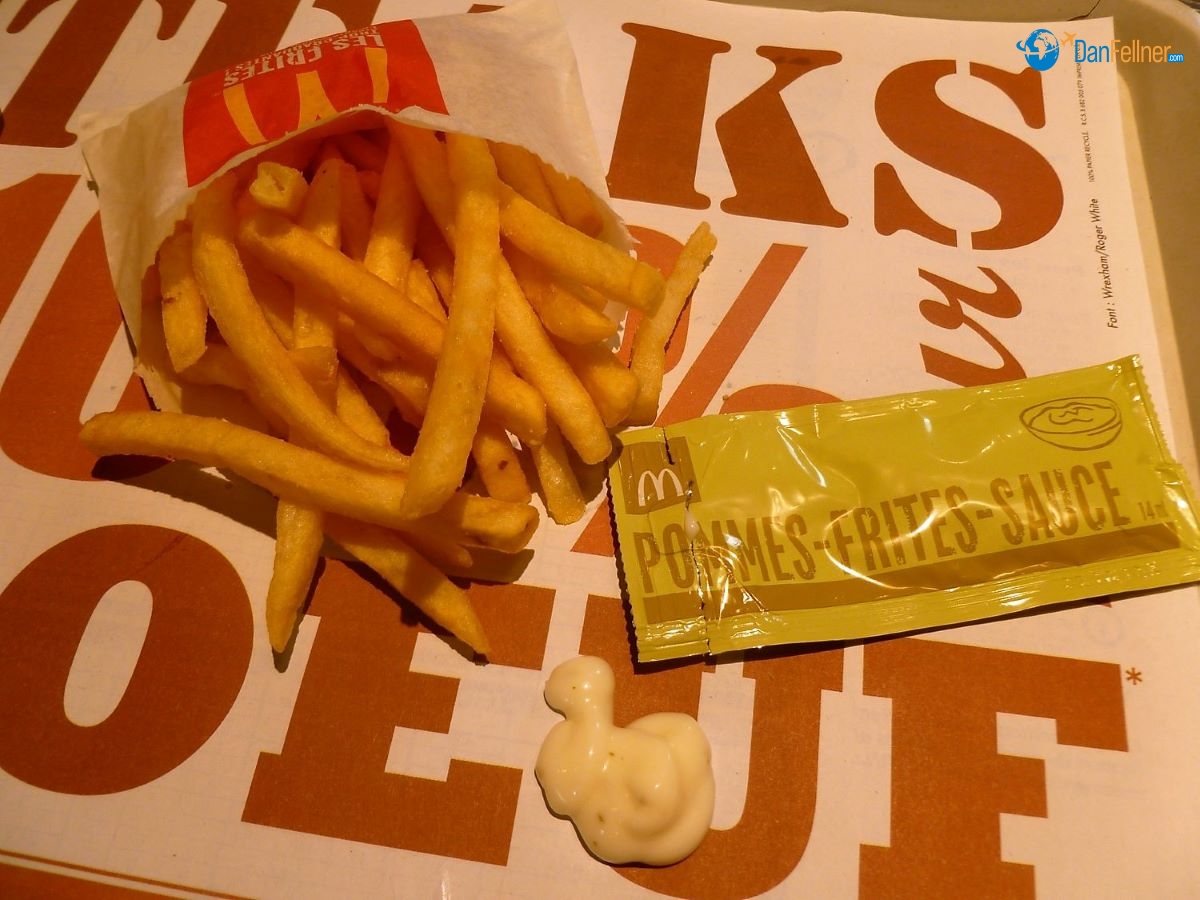
At McDonald’s in France, french fries are served with “pommes-frites-sauce,” which tastes like mayonnaise.
To wash it down, you can order a beer at McDonald’s in France and several other European countries, which tend to have more lenient views toward alcohol than Americans.
In terms of soft drinks and coffee, if you want a refill in most countries, you pay full price. In America you can guzzle down a gallon of Coke for $1.
In Buenos Aires where there is a Jewish community numbering close to 200,000, I ate lunch at the Abasto Shopping Mall at the only kosher McDonald’s in the world outside of Israel. Kosher rules prohibit the mixing of meat and dairy products. So this is one McDonald’s where you can’t order a cheeseburger or a milkshake. And Big Macs come without its iconic secret-sauce – it’s not kosher.
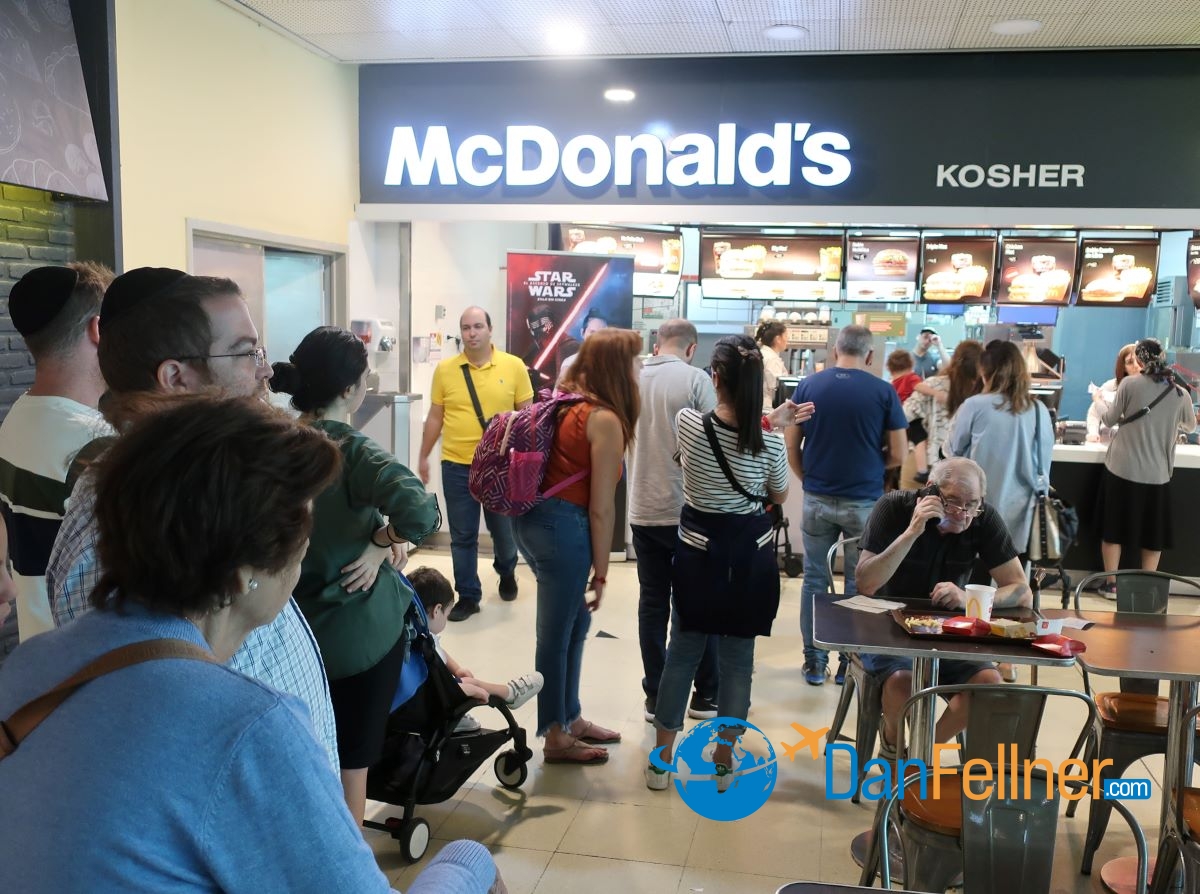
Reflecting its large Jewish community, Buenos Aires has the only kosher McDonald’s in the world outside of Israel.
The hamburger patties at the Buenos Aires McDonald’s are made from Argentine cows under strict rabbinical supervision. And there is a “kosher supervisor” on duty at the restaurant at all times to make sure all the rules related to kosher food preparation are followed. Interestingly, there was a standard McDonald’s only about 30 yards away in the same food court. The kosher McDonald’s was doing a far brisker business.
I tried a “Beef Prosperity Burger” at a McDonald’s in Bali, Indonesia, perhaps reflecting the deep spirituality of its people. It was a large rectangular burger covered with onions. Not sure if it made my life more prosperous, but it did make for a tasty burger.

One of the most architecturally unique McDonald’s in the world in Bergen, Norway.
In Bergen, Norway, I saw one of the most architecturally unique McDonald’s in the world. Located in Bergen’s bustling waterfront in a wooden building dating back to 1710, the restaurant looks more like a than a medieval fish warehouse than a fast-food restaurant.
In Hawaii, where Spam was introduced to feed U.S. military personnel stationed there during World War II, the state has had an ongoing love affair with the cooked pork product. In fact, Hawaii’s residents eat 7 million cans of Spam each year, the highest per capita consumption rate in the country. If you do the math, it averages out to about five cans of Spam per person.
Not surprisingly, McDonald’s in Hawaii now has Spam on its menu. In Honolulu, I tried a “Spam Platter,” a plastic plate full of Spam, scrambled eggs and white rice. Can’t say I loved it.

A Spam platter served at a McDonald’s in Honolulu, Hawaii.
Mind you, I don’t make a regular habit of scarfing down Big Macs and fries when I travel. I much prefer trying the local cuisine. But there are times – particularly in places where I’m experiencing a bit of culture shock – that a visit to McDonald’s gives me a sense of comfort and familiarity.
As for the McSpaghetti I tried in the Philippines, let’s just say Tuscan chefs have nothing to worry about. The sauce was way too sweet and the rubbery pasta was topped with some sort of mystery meat. A young man at the counter told me it was “beef sausage.” What appeared to be grated cheese was sprinkled on top.
I ate less than half of my McSpaghetti and chalked it up to a fast-food cultural experiment gone awry.
My apologies to Ronald McDonald, but Chef Boyardee would have been rolling in his grave.

A “Beef Prosperity Burger” on the menu at a McDonald’s in Bali.
© 2020 Dan Fellner

